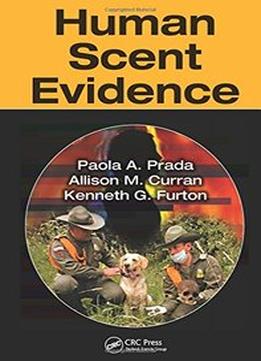
Human Scent Evidence
by Paola A. Prada /
2014 / English / PDF
19.9 MB Download
During the last decade, a significant number of scientific studies have supported the use of human scent as a biometric tool and indicator of the presence, or absence, of an individual at a crime scene. These findings even extend to conducting scent identification line-ups with suspects. Human Scent Evidence focuses on some of these recent advances in the use of human scent as forensic evidence and as an identifier. Topics include: Various theories of human odor production The variability, stability, and persistence of human scent Historical aspects of the use of human scent in police work in the United States and internationally Current trends in scent collection techniques, including devices, materials, and storage protocols Chemical aspects of the evaluation of human scent, including instrumental methods for odor detection and analysis The legal significance of human scent evidence results Canine scent work from multiple search categories as described in the Scientific Working Group on Dog and Orthogonal detector Guidelines (SWGDOG) Human scent evidence may be of critical use in many cases where other types of evidence such as DNA, fingerprints, or fibers are not readily available. As such, it can be a valuable tool in forensic investigations. With examples from North and South America and Europe, this book draws upon an extensive literature review of past and current research and is enhanced with findings from the authors’ own research. It concludes with a glimpse of the future direction of human scent evidence in the forensic field and its application as a biometric and diagnostic tool.











